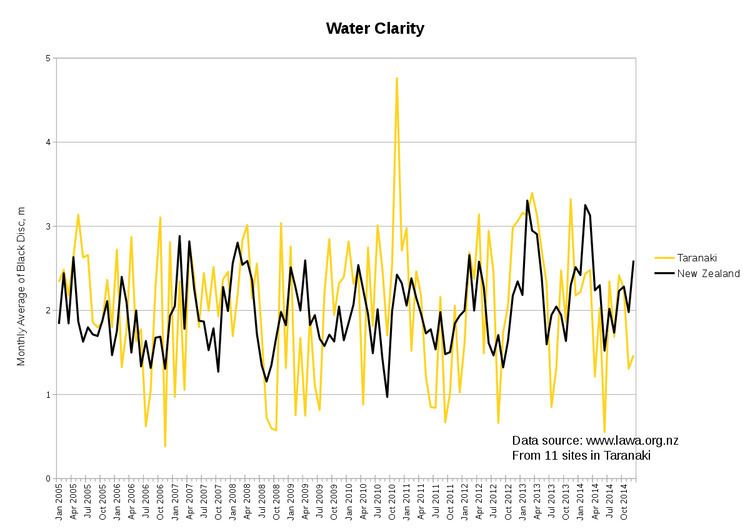 | ||
Water quality in Taranaki is a notable environmental issue for many stakeholders with concerns about the potential impact from dairy farming and petrochemical industries.
Water resources are under the jurisdiction of the Taranaki Regional Council (TRC) under the Resource Management Act (RMA), and discharges to water require a resource consent. The TRC monitors waterway quality and publishes update reports.
Nationally, deterioration in freshwater quality has been associated with increases in dairy cattle numbers and in use of nitrogen fertiliser. TRC advise that dairying had not increased in Taranaki since 2000 and water quality is good and getting better. In 2015, the dairy cow population was 493,361, a 2.5% increase on 1998/99, with density of 2.85 cows per hectare (2.8 in 1998/99).
A review by Fish & Game and Forest & Bird found that many measures intended to control pollutants from dairying had not been implemented. In Taranaki, there are 1400 dairy sheds where the dairy effluent drains into streams instead of being sprayed to land, according to data from Taranaki Regional Council's 2012 State of the Environment report. In 2012, the president of the New Zealand Freshwater Sciences Society expressed surprise at the number of consented dairy discharges to streams, given most other regional councils prosecute dairy farmers who allow dairy effluent to enter waterways.
Instances of high levels of E.coli have been reported during summer periods.
Water quality measurements
The following table shows average of measurements over the period 2005 to 2014.
